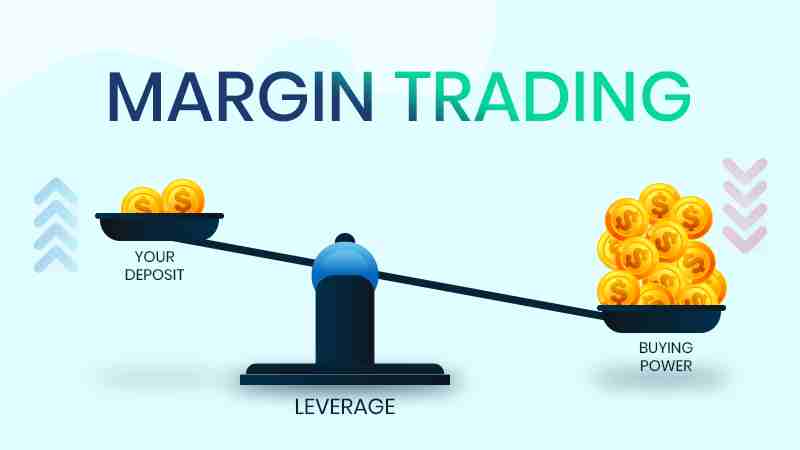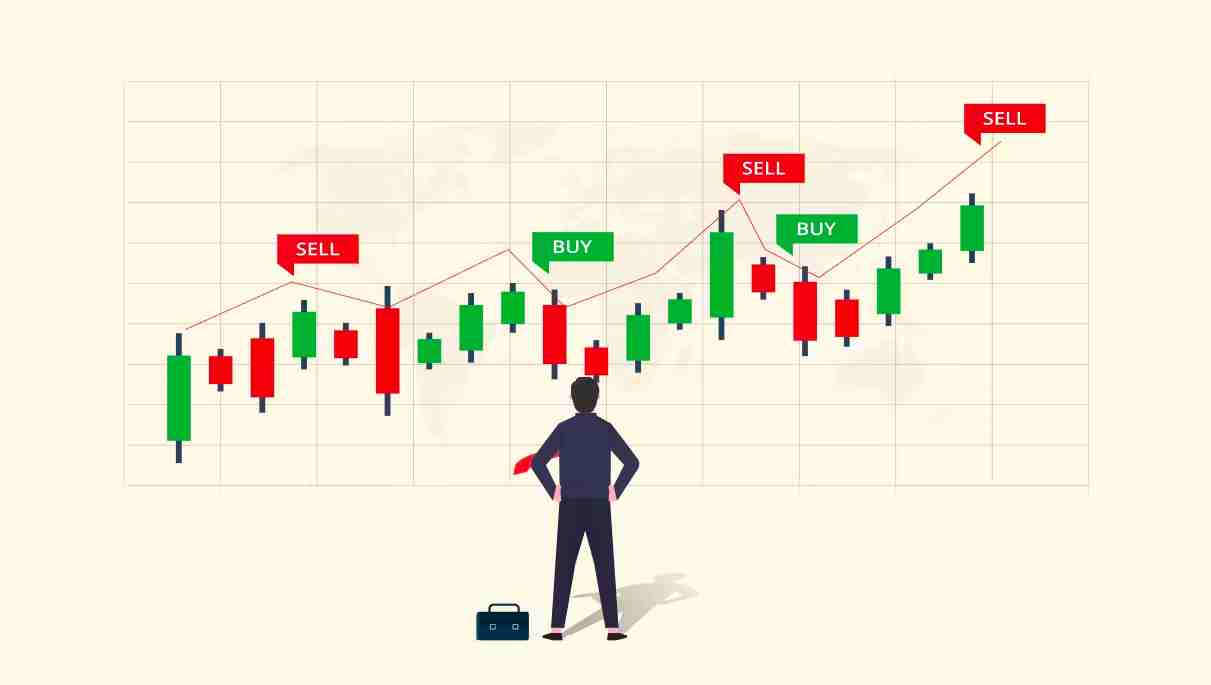Are you ready to dive into crypto margin trading but scratching your head about where to start? Beginner’s guide to choosing a crypto margin trading exchange—let this be your compass. It’s crucial to pick a platform that not only fits your needs but also secures your digital gold. Our guide walks you through the nuts and bolts of what makes an exchange stand out amidst the crowd and keeps your trades safer than a vault. By understanding the basics and critiquing each exchange wisely, you’ll set yourself up for success in the high-stakes world of crypto leverage. Let’s get you started on a journey from novice to pro—you got this!
Understanding the Basics of Crypto Margin Trading
Grasping Margin Trading Basics
Before diving headfirst into the world of cryptocurrency margin trading, let’s break down the core idea. Margin trading means you trade more coins than you actually have. It’s like a loan from the exchange, letting you trade big with less money. Think of it as extra power for your trading punch. You’re using someone else’s money to aim for higher wins. But with higher potential wins, the risks also grow. This means if things go south, you could lose more than your initial bet.
Margin trading basics revolve around using this extra money, called leverage. This brings us to the terms ‘initial margin’ and ‘maintenance margin.’ Initial margin is the chunk of your own coins you need to start the trade. Maintenance margin is the amount you need to keep it going. If the trade turns bad and your coin value drops, you could hit the margin call limit. It’s the level where the exchange says, “Hey, you need to put more coins down, or we’re closing your trade!”
Why Cryptocurrency Leverage Needs Careful Explanation
Now, we need to talk about cryptocurrency leverage. Here’s the thing – leverage is tricky. It’s like a seesaw; it can lift your profits high or crash them down hard. Let’s say you’ve got $100, and you use 5x leverage. You’re now trading $500 worth of coins. If the market smiles at you, joy! You make more. But if it frowns, your $100 could vanish fast. That’s why explaining cryptocurrency leverage is super important.
We can’t stress this enough – using leverage responsibly is key. It’s tempting to go big, dreaming of huge profits. Sure, sometimes that works, but it’s a double-edged sword with sharp risks. That’s why we say you should never skip on doing your homework. Before selecting a beginner crypto trading exchange, make sure they clearly explain leverage and margin rules. And look for platforms offering demo accounts. Practicing in a sandbox can save real money later.
Be on the lookout for exchange security features to protect your funds. Also, compare margin trading platforms before you commit. Not all exchanges offer the same terms or goodies. Some might have lower fees, others will have a better selection of trading pairs. And yes, you want an exchange that’s up and running 24/7 with solid customer support.
Understanding liquidation risk is just as crucial. When the market goes against your trade, the exchange might sell off your coins to settle the debt. Ouch. This can happen in the blink of an eye, with no “are you sure?” pop-ups. So, studying how to avoid margin calls becomes part of your trading strategy.
Got all that? Good. Keep this in mind: starting small and learning the ropes beats jumping into deep waters unprepared. Remember, in the crypto world, the waves can get pretty high, and even the best swimmers must respect the power of leverage.
Criteria for Choosing a Crypto Margin Trading Exchange
Prioritizing Exchange Security Features
When you step into beginner crypto trading, think safety first. Picking a place to trade? Make sure it’s like a vault. You don’t want your hard-earned money to vanish into thin air. What’s a top sign of a safe exchange? Look for one that keeps most coins offline, away from hackers. This is called ‘cold storage’, and it’s like a digital bank vault. Also, check if the exchange has a past of hacks. No past issues? That’s a good sign. They should also check your ID—this is called KYC, or ‘Know Your Customer’. It’s a pain, but it means they’re playing by the rules.
Comparing Margin Trading Platform Offerings
Choosing crypto exchange for margin trading is more than just picking a color. It’s serious stuff. Let’s get why clear. Crypto moves fast, and using leverage multiplies this. Leverage means you can trade more than you own. It can boost your wins but also your losses.
Now, let’s hit ‘compare margin trading platforms’. What are you looking for? Low fees, lots of trading pairs, and tools to make smart moves. Some platforms let you try trading without risking real money. This is called a ‘demo margin trading account’. Use it to learn without losing your cash.
Watch out for ‘margin interest’. This is the cost of borrowing money to trade. And know ‘cross margin vs. isolated margin’. Cross margin spreads your risk across all trades. Isolated margin pins risk to one trade. Choose wisely to keep risks in check.
You’ll want a user-friendly exchange interface, especially if you’re new. Twists, turns, and complex charts? No, thank you. Go for clean, simple, and easy to use. Lost in the platform? You can miss good trade chances.
Before you dive in, be sure you know ‘margin trading account requirements’. Each platform has rules on how much you need to start. ‘Initial margin’ is what you put up first, ‘maintenance margin’ is what you must keep in the account.
One more tip: Go where the action is. A platform should have good ‘exchange liquidity’. This means you can buy or sell fast without shifting the market price. No liquidity is like a car lot with no cars. Useless, right?
So, remember these big things when choosing. And never rush picking your trading home. Take your time, compare, and always start with safety first.
Now that you know what to look for in exchange security and platform offerings, you’re ready to take your first step into the exciting world of cryptocurrency margin trading. With these insights, you’ll be better prepared to select a platform that not only enhances your trading potential but also safeguards your investments. Choose wisely, trade responsibly, and remember, the crypto market waits for no one. Happy trading!
Assessing Risks and Account Features in Margin Trading
Recognizing the Importance of Exchange Liquidity
When choosing a crypto exchange, think liquidity. Liquidity means how easy it is to trade without affecting price. A liquid market lets you buy and sell fast. It’s vital for margin trading. You want to enter and exit trades quick at known prices.
Breaking Down Margin Call Criteria and Liquidation Risks
Margin calls happen when your account value falls. It’s a risk in margin trading. If your margin falls below a set point, you get a margin call. You must add funds or risk losing your position. Know the rules for margin calls on your exchange.
Liquidation means closing your trades at a loss. It happens when your account can’t meet the margin call. High leverage can increase this risk. Start with low leverage to keep risks small. Always understand the terms for margin and liquidation on your exchange. It helps you stay safe when trading.
Enhancing Your Trading Experience and Security
Selecting User-Friendly Exchange Interfaces
When you start with crypto trading, it’s like learning a new game. You want it to be fun, not frustrating. Think of the exchange interface as the game’s control panel. If it’s not easy to use, you won’t have fun. A user-friendly exchange interface makes your trading smooth. It lets you find features fast and react quicker in the market.
Look for exchanges that lay things out clearly. Bright buttons, simple menus, and handy tips are signs of a good design. The easier it is to use, the better you will trade. Don’t let a bad interface slow you down. A simple interface means fewer mistakes. This is important when using money and taking risks.
Integrating Trading Tools and Customer Support for Effective Trading
Now, let’s talk tools and support. Trading tools are like having a Swiss Army knife in the market. They help you make smart decisions. Chart tools, real-time data, and history records give you an edge. Different tools can predict prices or plan your next move. They are must-haves for any trader.
But what if you get stuck? That’s where support comes in. Pick an exchange that is there for you all the time. Imagine having a question in the middle of a trade. Quick support could save the day. Strong customer service is the backbone of a good exchange. It shows they care about you and your trading.
Remember, these features can make or break your trading adventure. Choose an exchange that feels right. It should give you tools and help when you need it. When you’re comfortable, you trade better. And when you trade better, you stand a better chance to win this game.
We’ve covered a lot about crypto margin trading here. We started with the basics, where you learned how it works. Then, we talked about why being careful with leverage is key. Next, we looked at how to pick the right exchange, focusing on safety and what each platform offers. Finally, we broke down the risks you face, from exchange liquidity to margin calls, and how to get a solid trading experience with good tools and support.
I hope this guide has cleared the air on margin trading in crypto. Remember, security and knowledge are your best tools. Pick exchanges wisely, know the risks, and use support when you need it. Trade smart and stay on top of the game!
Q&A :
What is a crypto margin trading exchange and how does it work for beginners?
Margin trading in the context of cryptocurrency involves borrowing funds to increase the size of a trading position beyond what would be possible with one’s own capital alone. Crypto margin trading exchanges provide this service. For beginners, it means you can trade larger amounts of cryptocurrency with a smaller initial investment, but it also increases the potential risk and reward.
How can beginners safely choose a crypto margin trading exchange?
Beginners should look for exchanges with a strong security track record, clear fee structures, good customer support, and comprehensive educational resources. It’s also important to start with a platform that offers a user-friendly interface, and to use demo accounts if available, to practice margin trading without the risk.
What are the key features to look for in a crypto margin trading exchange?
Key features include:
- Leverage options: Understanding how much leverage the exchange allows you to have.
- Supported cryptocurrencies: Checking whether the exchange supports the trades in cryptocurrencies you are interested in.
- Fees: Transparent fee structure including any hidden costs.
- Liquidity: The ability for the exchange to fill a trade order without significant price changes.
- Security: Strong security measures to protect your funds and personal information.
What are the risks associated with crypto margin trading for novices?
The primary risk is the potential for significant losses. Since trading on margin means you are borrowing money, if a trade goes against you, you can lose more than your initial investment. Also, there can be a risk of sudden market volatility and the possibility of margin calls, when the exchange asks you for additional funds to maintain your positions.
How do you manage risk when engaging in crypto margin trading as a beginner?
Beginners should start by trading small amounts to minimize risk. Using stop-loss orders can also help cap potential losses. It’s crucial to keep a close eye on market movements, stay informed about market trends, and never invest more than what you can afford to lose. Additionally, learning and practicing trading strategies in demo accounts can build knowledge and confidence.


